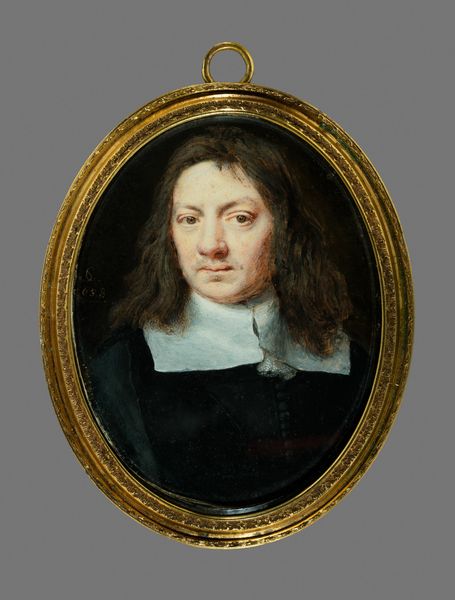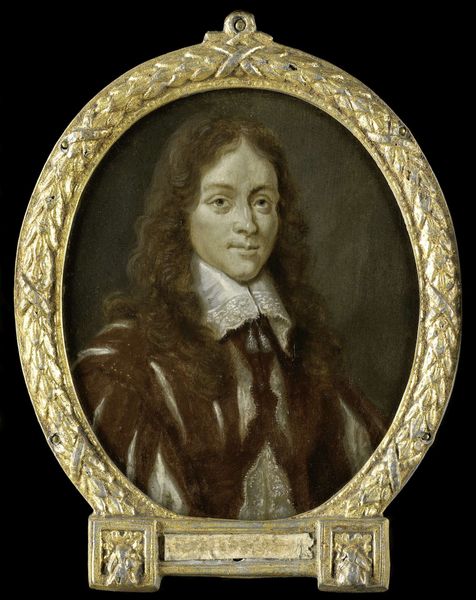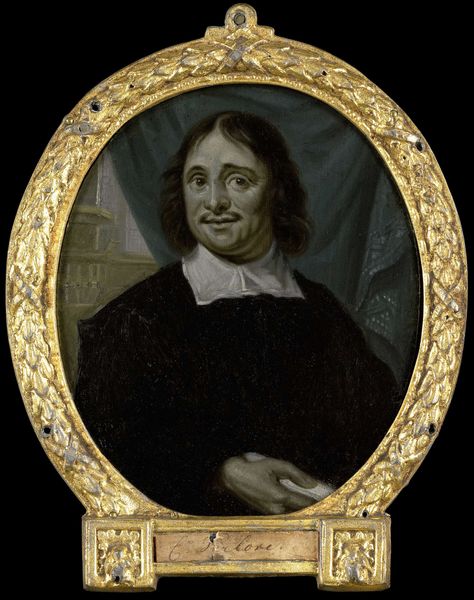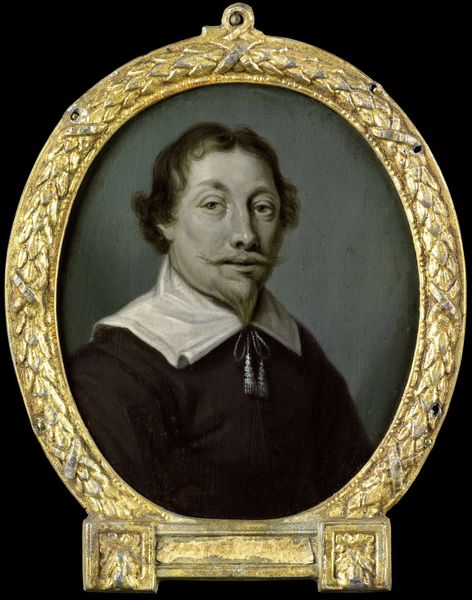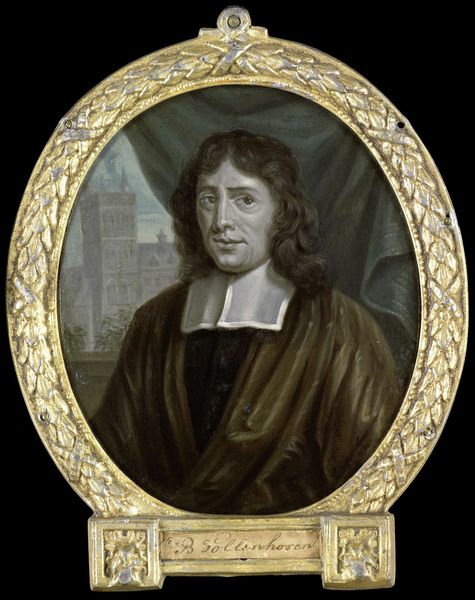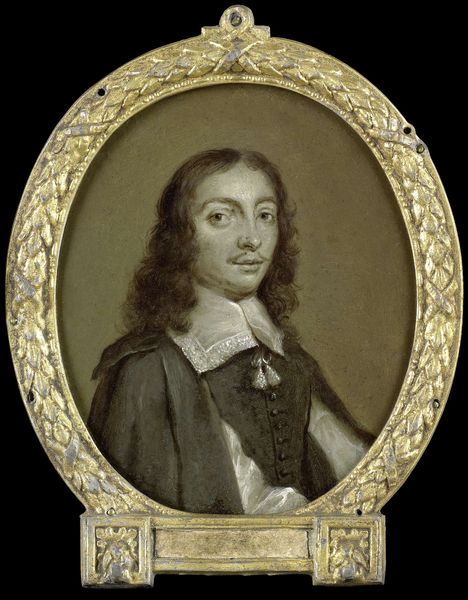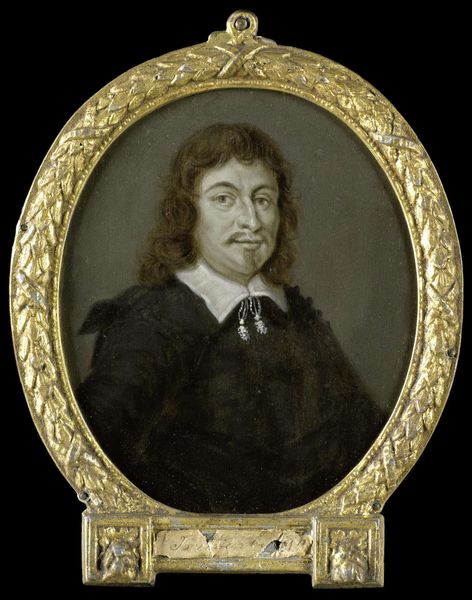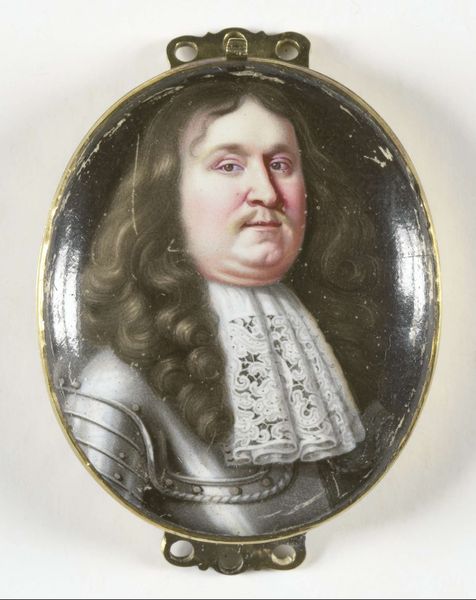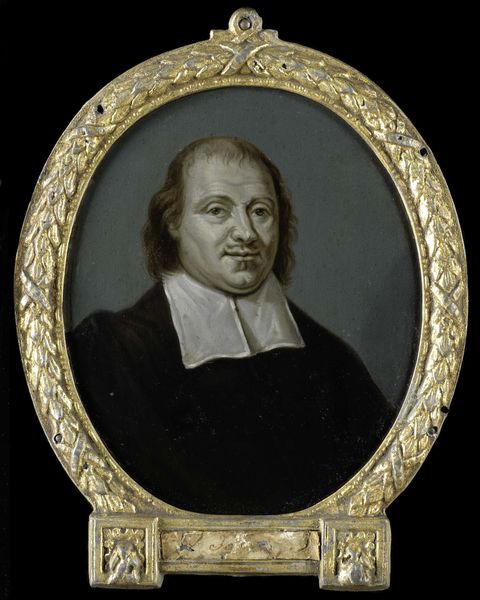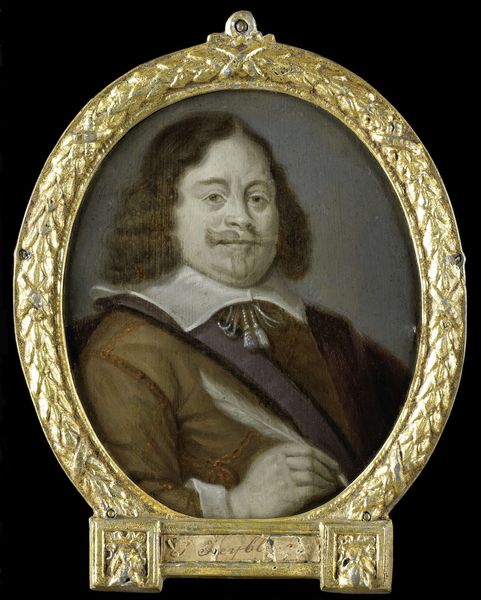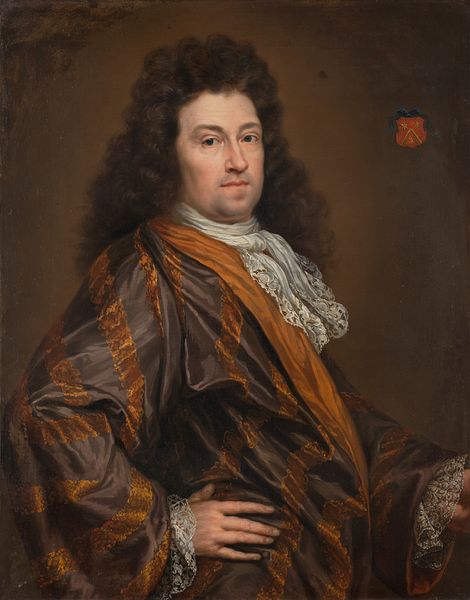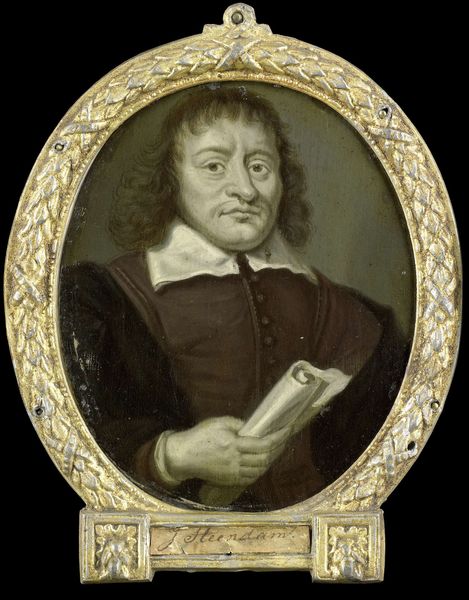
Portrait of Elizabeth Cromwell, Daughter of Oliver Cromwell c. 1650
0:00
0:00
painting, oil-paint
#
portrait
#
portrait
#
painting
#
oil-paint
#
history-painting
Dimensions: 4.1 × 3.3 cm (1 5/8 × 1 5/16 in.)
Copyright: Public Domain
Editor: Here we have Paul Prieur’s “Portrait of Elizabeth Cromwell, Daughter of Oliver Cromwell,” created around 1650 using oil paint. It strikes me how contained and almost claustrophobic the composition feels within that ornate gold frame. What elements of this work particularly catch your eye? Curator: Consider first the oval format: it inherently restricts and centralizes focus. Notice how Prieur utilizes this constraint. The subject's figure occupies nearly all available space. Her fur garment abuts the bottom edge, the head covering brushes the top. Editor: Yes, it's a deliberate choice to emphasize her presence and importance within this small space. Curator: Indeed. And examine the color palette. The somber blacks and browns of her attire are offset by the delicate pearls and the subtly rendered skin tones. It produces contrast in value but maintains formal unity. Where is your eye drawn? Editor: I find myself studying her face, drawn in by the almost unsettling, direct gaze, as there's minimal shadowing to the subject's left and right cheek area. I also note the symmetrical frame offsets a non-symmetrical pose. Curator: Precisely. The light, evenly distributed across the subject’s face, lacks dynamism but flattens the planes of her visage, further drawing us to the directness of her expression. Also, what does the subject's positioning imply? Her gaze engages, her asymmetry suggests this is no casual meeting with the painter. Editor: It really makes you consider how choices about colour and form, as well as scale can affect your interaction with a painting! Curator: Absolutely. Considering purely visual and material elements unlocks potential meaning from a seemingly simple painting.
Comments
No comments
Be the first to comment and join the conversation on the ultimate creative platform.
